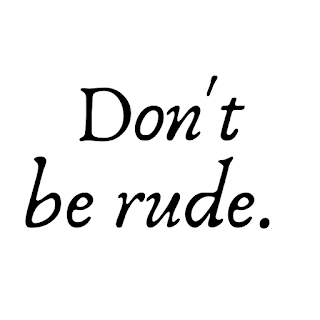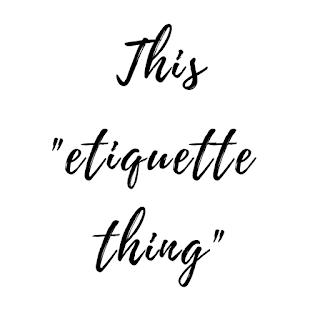THE TEA ABOUT TEA FROM AROUND THE WORLD!
Afternoon Tea or High Tea?
Both being British tea traditions , High
Tea and Afternoon Tea are often misunderstood
and confused for one another, However they are not the same.
So, what are the differences? You may ask.
Well, here’s all you need to know.
If you hear the words “High
Tea“ and think of fine china, dainty finger foods
and fancy dresses you‘re not alone but you are also not correct.
High Tea was given its name because it was
traditionally served at higher dinner tables and/or counter tops, not
because it involves high class as most people presume.
High Tea is more of a substantial meal served
the end of the work day (between 6 pm-7 pm). Dishes like meat and fish, along
with bread are offered. It is not a fancy gathering with dainty
china. In fact, it is a gathering of laborers, often referred to as
the lower class.
Afternoon Tea is the kind of service most
people envision when they think of “high tea” or a tea party. It can also be
referred to as “low tea” because, opposite to High Tea, it is most often served
at a low table.
Afternoon Tea was the service for the
upper class. It began as a social gathering around the 1840s, in
England. It is believed that the Duchess of Bedford was feeling
hungry between a breakfast feast and late dinner so she decided to have some
snacks accompanied by tea. She continued this habit and invited guests over to
enjoy it as well.
Thus, Afternoon Tea was intended to fill that
gap between lunch time and dinner time, generally served around 3 or 4pm. That
is why it is a lighter meal with bite-sized food. It consists of a savoury
course with sandwiches , a sweet course and scones with clotted cream and
jam.
History of Tea!
Legend has it that, in 2737 B, Emperor Shen Nung was sitting under
a tree ( Camellia Sinensis ), while his servant boiled some drinking water.
Dried leaves from the tree fell into the pot and infused with the water,
creating the first tea infusion which the emperor enjoyed.
First references to tea in Britain happened in the year
658 via an advert in a London newspaper about its availability in a
coffee house, in which it was referred to as the “China drink” known
as Tcha, Tay or Tee. In the year 1664, the East India Company began to import
tea into Britain .
The end of East India Company’s monopoly on trade with China
brought about the growth of tea in British colonies such as India and Sri
Lanka. This was a more cost efficient option, as shipping time to Britain was
reduced significantly.
In the year, 1908 Thomas Sullivan, a New York tea merchant started
to send samples of tea to his customers in small silken bags. Some customers
assumed these bags were to be used the same way as metal infusers, and put the
whole bag in the pot. Hence, the unintentional creation of the tea bag. Based
on customer feedback, Sullivan developed the first tea bags out of gauze.
By the 1920’s, Tea bags were developed for commercial production,
initially from gauze and then later from paper. In 1929, the first
tea plantation was established in Malaysia during the British colonisation, in
Cameron Highlands.
Global Tea Guide and Etiquette
Here's brief overview of the tea practices in some countries
around the world. Enjoy!
JAPAN
Japan has tea ceremonies with names
like Chanoyu, Sado, or Ocha. These ceremonies include everything from the
preparation of the home to how guests are invited into it, the order in which
utensils are brought into the room, the cleaning and warming of these tools,
the actual brewing, and the cleanup. Details vary depending on the time of day
and season, but the powdered green tea Matcha is the preferred blend. It is
served with sweets to play against its bitter flavor.
INDIA
India is best known for its blends that mix
black tea leaves with spices like cinnamon, ginger, nutmeg, cloves, cardamom,
and pepper. Vendors called chai wallahs traditionally sell their brew in
small sustainable clay cups made from local earth. Some people consider the
dust of these clay cups to be a crucial ingredient to get the true taste of
this national drink.
ARGENTINA
Argentina
has a blend called "verba mate" (pronounced ma-tay), an herb
"tea" made from its titular herb. Called "the drink of the gods,"
it's a staple of Argentinian life. One thing you must never do is stir
the brew with the bombilla, as it questions the abilities of its brewer/your
host.
MALAYSIA
The signature brew in Malaysia contains black
tea, sugar, and condensed milk. But what makes the Teh Tarik or
"pulled tea" special is how it's mixed. To achieve its distinctly
frothy texture, Malaysian brewers pour the beverage back and forth between
mugs, giving the liquid repeated access to cool air as it flows from one glass
to another.
TAIWAN
The Taiwanese
bubble tea is a modern innovation on Chinese tradition. the bubbles are
derived from small balls of tapioca, a starchy white grain.
RUSSIA
Zavarka, a loose-leaf tea concentrate brewed
in a small metal container was developed during the time of shortage in
Russia. A very strong black tea is brewed and then served in large mugs.
The rule, however is that the mug must not be filled up. Instead, guests take
an inch or less of this powerful concoction, then tame with boiling water as
desired. Russians typically drink it black, but hosts will offer milk and
sugar, as well as an accompanying snack. Serving zavarka without cookies,
crackers or some other snacks is to serve it "naked" and is
considered to be rude.
CHINA
The traditional Chinese tea ceremony, known as
: "Ghongu fu Tea" is an incredibly detailed process.
The ritual involves a tureen, strainers, tongs, tea towels, a brewing tray, and
certain "scent cups," which are used solely to sniff the very strong
and bitter brew.
Guests are invited to smell the leaves before
brewing. Thereafter,the tea will ideally be poured by arranging the cups in a
circle, pouring from high in one continuous motion, around and around until
each cup is full.
Guests are expected to cradle the cup in two
hands, to sip slowly and savor the flavor, and then cradle the empty cup to
relish in the aroma after the tea is gone.
THAILAND
Tea culture in Thailand became unique with the
evolution of the distinctly amber-colored Thai iced tea or Cha Yen, a blend of
Ceylon or Assam tea with sugar, condensed milk, and spices like star anise,
tamarind, and orange blossom, served over ice in a tall glass.
PAKISTAN
Tea is a common drink and a courtesy extended
to guests across Pakistan. An element of Kashmiri culture, Noon Chai is a
special blend of tea that includes a mix of pistachios, almonds, salt, milk,
and spices like cardamom, cinnamon, and star anise. Noon chai is typically
enjoyed with pastries like sheermaal, kandir tchot, bakarkhani.
TIBET
Po cha, the traditional tea of Tibet, is
made by boiling a brick of Pemagul black tea for hours. From there, milk, salt,
and yak butter are added, and the mixture is then churned together. It's said
this blend with a soup-like consistency is uniquely comforting in the
high-altitude and cold climates.
HONG
KONG
Brewing of this powerful blend is
labor-intensive, demanding 10 to 20 minutes of dedicated and repeated
straining. It is often referred to as "panty-hose tea" because of the
straining socks which resembles a hose.
MOROCCO
A
mix of mint, green tea leaves, and a generous serving of sugar, Touareg tea is
the customary blend in Morocco. Poured from up high into slim,
delicate glasses, it's served three times to guests. Each time the flavor
varies slightly. There is the proverb which goes thus "The
first glass is as gentle as life, the second is as strong as love, the third is
as bitter as death." Refusing any one of these servings is considered the
height of rudeness.
IRAN
Tea is served very strong in
Iran and rather than mixing in sugar to counteract the bitterness, you're
encouraged to place a sugar cube between your front teeth and suck the strong
brew through it.
NEW ZEALAND
New
Zealand adopted Britain' s Afternoon tea style.
NIGERIA
An interesting thing to
note is that many Nigerians often refer to chocolate drinks as tea. so,
most times, especially if you're not in an urban region, it's important to
clarify things. Nigerians drink tea casually with food for the most
parts, but some enjoy it alone in the early hours of the day, to boost their
productivity.
Types of Tea
These are the most
common and not so complex types of tea.
Black Tea
This includes the popular brands like “Earl
Grey” and “Lipton”
Green Tea
Oolong Tea
Oolong
tea is made from the same plant that produces black and green tea, but while
black tea is fully oxidized and green tea is not oxidized, oolong is
semi-oxidized, then rolled to give it its signature shape.
Herbal
Teas
Often
created by steeping spices, herbs and other plants. Common ones ChamomileTea
and Hibiscus Tea.
White Tea
Like
green tea, white tea is not oxidized. But white teas are generally considered
to have a lighter, more mellow flavor than black or green tea.
Pu'erh
Tea
A
fermented tea using aged tea leaves. Some are even aged for decades before use.
I
hope you have learned something new and exciting. I look forward to having tea
with you!
Thank
you.
Scones
Recipe.
Ingredients
- 3 cups all-purpose flour
· ½ cup white sugar
· 5 teaspoons baking
powder
· ½ teaspoon salt
· ¾ cup butter
· 1 egg, beaten
· 1 cup milk
Steps
· Step 1
Preheat oven to 400
degrees F (200 degrees C). Lightly grease a baking sheet.
·
Step
2
In a large bowl, combine
flour, sugar, baking powder, and salt. Cut in butter. Mix the egg and milk in a
small bowl, and stir into flour mixture until moistened.
· Step 3
Turn dough out onto a
lightly floured surface, and knead briefly. Roll dough out into a 1/2 inch
thick round. Cut into 8 wedges, and place on the prepared baking sheet.
· Step 4
Bake 15 minutes in the
preheated oven, or until golden brown.







Amazing write up.. mehn
ReplyDeleteAwesome stuff! Learnt alot. Nigeria be shaming us calling milo tea 🤦♀️
ReplyDeleteWhaoh! Great piece, I learnt something new
ReplyDeleteHmmn! Really cool to know about the types of Tea made in other countries.
ReplyDeleteI'm a tea lover but I just realized there are so many other tea types I don't know about. Thanks for sharing.
ReplyDeleteThis is a great piece of work. It has opened my eye to alot of things about tea that I did not know before . Good job
ReplyDeleteThis is amazing
ReplyDeleteI love it
Woww, well done this is really amazing
ReplyDeleteI like this, it's very detailed
ReplyDelete